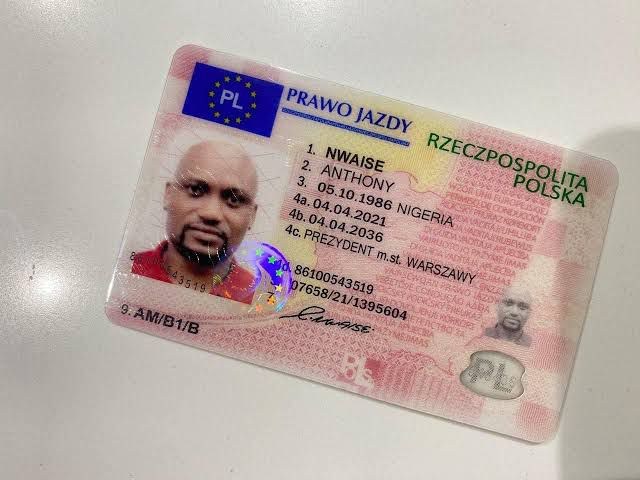The Most Popular Driving Licenses B Gurus Are Doing Three Things
Understanding Driving Licenses: Types, Requirements, and Frequently Asked Questions
Driving is a fundamental element of modern-day life, and obtaining a driving license is an important turning point for lots of people. This article checks out the different kinds of driving licenses offered, the requirements to obtain them, and answers typically asked questions associated with the subject. An educated point of view on driving licenses can help people comprehend the significance of choosing the right kind of license to satisfy their requirements.
Kinds Of Driving Licenses
Driving licenses can vary between countries and regions, but they generally fall under several significant classifications. The following table sums up the most common types of driving licenses, including their functions and typical limitations.
Kind of License
Description
Typical Restrictions
Eligibility Age
Learner's Permit
Permits beginner drivers to practice.
Need to drive with a certified adult.
16-18 years of ages
Class C License
Standard license for passenger automobiles.
No limitation on variety of guests.
18 years or older
Class A License
Industrial license for large cars.
Must adhere to stricter policies.
21 years or older
Class B License
For driving buses and larger vehicles.
May require special recommendations.
21 years or older
Motorbike License
For operating bikes.
Need to wear a helmet; differs by state.
16-18 years of ages
International License
Permits legal driving in foreign countries.
Need to have a valid domestic license.
18 years or older
Student's Permit
The learner's license is the very first action for numerous individuals venturing into the world of driving. This license allows novice drivers to practice driving under monitored conditions, generally requiring a certified grownup over a specific age to accompany them in the automobile.
Class C License
The Class C license is the most typically held driving license, permitting people to operate basic traveler cars. This license typically has less restrictions compared to other categories.
Class A and B Licenses
Class A and B licenses are required for running industrial automobiles. These licenses need unique training and testing, making sure that chauffeurs are equipped with the skills required for steering bigger and more intricate lorries securely.
Bike License
Individuals interested in riding bikes should obtain a bike license, which can require extra training and screening. Security equipment, such as helmets, is frequently mandated by law.
International License
A global driving license enables people to drive in foreign nations, however it is crucial to have a valid domestic driving license in combination with the global license.
Requirements to Obtain a Driving License
The requirements for obtaining a driving license can differ considerably by jurisdiction. However, there prevail steps and criteria that the majority of candidates will encounter. Below is a list of general requirements:
Age Requirement:
- Minimum age differs; learner's authorizations are frequently issued at 16, while complete licenses might require candidates to be 18 or older.
Vision Test:
- Most jurisdictions need applicants to pass a vision test to make sure safe driving capabilities.
Composed Test:
- New motorists need to pass a composed exam that covers traffic laws, road signs, and safe driving practices.
Driving Test:
- Practical driving tests are carried out to show an applicant's capability to operate a vehicle safely under various conditions.
Charges:
- Payment of application and testing charges is typically required.
Evidence of Identity:
- Applicants must supply valid recognition, such as a passport or birth certificate, in addition to evidence of residency.
Adult Consent (for minors):
- Parental or guardian permission is often required for applicants under the age of 18.
Understanding the various kinds of driving licenses and their involved requirements is important for anyone aiming to drive lawfully and safely. Each license serves an unique purpose, catering to numerous driving requirements, from standard cars to business transportation and motorcycles. By satisfying just click the up coming internet site required criteria and adhering to guidelines, aspiring drivers can delight in the liberty of driving while guaranteeing their security and the safety of others.
Regularly Asked Questions (FAQs)
What do I need to bring when getting a driving license?
- You generally need to offer identification, proof of residency, and any necessary application fees. Inspect with your local DMV or licensing authority for particular requirements.
How long does it require to obtain a driving license?
- The timeline can differ based on private scenarios, such as how quickly one can finish the needed tests, and whether there is a stockpile at the licensing authority.
Can I drive with a learner's authorization?
- Yes, but you need to be accompanied by a certified motorist and adhere to limitations set by your local laws.
What happens if I fail the driving test?
- You normally have the choice to retake the test after a designated waiting period, which differs by jurisdiction.
Is it required to take a driving course?
- While not constantly mandatory, taking a driver's education course can be useful and is frequently required for individuals seeking a learner's authorization.
By being informed about the kinds of licenses offered, the requirements essential for getting one, and the associated regulations, potential chauffeurs can navigate the process of getting a driving license with confidence.
